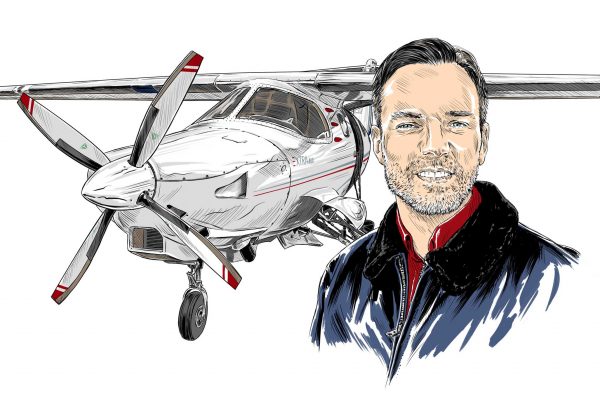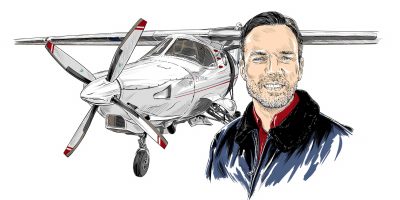W
hile we continue to try and navigate an exit from the coronavirus situation, the question of the UK’s future relationship with the EU remains unanswered. At the time of writing in May, we are still moving towards the end of the year and the transition period, while knowing little more than we did six months ago as to what that will bring.
Government papers and comments earlier in the year suggested continued membership of EASA is unlikely, although as with any negotiation, positions may change. Membership of EASA would place an obligation on the UK to align with EU law, which is against the government’s principles for the future relationship. There may be a chance that towards the end of the negotiations, alignments take place in technical and politically uncontentious areas, but that is pure speculation.
Most of the current CAA guidance is predicated on a full exit from EASA and the UK reverting to the status of any other ICAO member state. There is also the related question of commercial traffic rights, but since this mainly affects commercial air transport, lets focus on the safety regulation dimension, as this is more relevant to GA.
“On the pilot licensing front, there probably is scope for simplification while retaining ICAO compliance”
For GA pilots with UK issued licences (both EASA and non-EASA) flying UK registered aircraft, we do know that all likelihood, not much will change. UK legislation will be put in place to ensure that within the UK system, existing licences and privileges remain the same. The same principles apply to all other certificates, approvals and privileges issued by UK CAA under the EASA system – they will remain valid for UK registered aircraft after the end of the transition period. For ICAO compliant licences and aircraft – i.e. PPL and upwards flying an aircraft with an ICAO Certificate of Airworthiness, rights of navigation abroad should also not change (although customs and immigration is a separate question).
Validation process
In the absence of any mutual recognition agreements, what will change is that UK issued licences and certificates will no longer be legally recognised within the EASA system – for example you would not be able to fly an aircraft registered in an EASA member state without some sort of validation. It remains to be seen what that validation process might look like.
In terms of going the other way, EASA licences and approvals issued by states other than the UK will also no longer have automatic validity in the UK. However, current guidance suggests the CAA will issue a ‘general validation’ which would allow EASA licences to be used for UK aircraft, likely for a further period after the end of the transition.
A common discussion point is whether UK pilots should be looking to transfer to another ‘state of licence issue’, such that they can continue holding an EASA licence. There is no restriction in terms of place of residence or nationality, however you can only hold an EASA licence from one state at any one time. So while it is still possible to do a transfer during the transition period, you have to surrender your UK issued EASA licence. This might be worth looking at if you want to fly aircraft registered in other European states in the future, although make sure you understand the timescales involved since it can take several months.
There are still areas of uncertainty, for example it is not clear what will happen to UK-issued EASA licences that are not ICAO compliant, such as the LAPL. Logically at the end of the transition they would revert to a ‘UK only’ status similar to that of the NPPL.
Exactly what the UK framework will initially look like post-transition period is also not clear. On day one after the transition the concept of ‘EASA’ and ‘non-EASA’, will probably live on in UK law to some extent. It is not clear for example whether on day one after the transition whether NPPL holders will be able to fly previous ‘EASA’ aircraft or whether self-declared medicals will be valid in the same manner (one would hope so on both counts). To create a stable starting point for future divergence, UK law will initially copy the existing EU equivalents. However, assuming no future agreements to the contrary, the old EASA / non-EASA distinction will likely fade in time.
There are some interesting decisions to be made in the longer term as to how the regulatory structure in the UK will develop and what opportunities for GA in the UK there might be. Leaving EASA prompts the question of what we might change. In areas such as light aircraft certification, it would probably make sense to continue to broadly follow the EASA system, so that manufacturers selling in the EASA regulated market will not have to deal with different UK requirements. Years have been spent getting more proportionate EASA continuing airworthiness requirements for GA, so it will be interesting to see whether there is a desire to go back to old arrangements or continue to follow the concepts developed in Europe.
On the pilot licensing front, there probably is scope for simplification while retaining ICAO compliance. The story that started with the Joint Aviation Requirements licensing requirements (JAR-FCL) in the late 1990s – and that later became the EASA Aircrew Regulation – did bring complexity to licensing. Not to say that the previous UK requirements were perfect, but there may be a chance here to reshape something simpler.
More info:
https://info.caa.co.uk/brexit/




